- Author who lived
in Maldives for six years, shares insights on the origin, growth of tourism in
the island nation and what attracts tourists to Maldives.
Comprised of coral reefs of volcanic origin, the Maldives consists of a chain of 26 Atolls, atop of which there are about 1,190 islands with a total population of approximately 395,000, a third of which live in the capital of Male’. Besides the 200 local islands, as of today, the country has seen the development of 130+ resort islands, along with some 900 uninhabited islands and numerous desolate sandbanks free from any vegetation.
The highest land point in the Maldives
is 2.4 meters, making it the lowest highpoint in the world. The country /
islands stretch from just southwest of India to beyond the equator.
The location of the string of islands
close to the equator means that the Maldives receive plenty of sun all year
round, with the average air temperature close to 30 degrees Celsius, and water
temperature constant at about 28 degrees Celsius.
Very few oceans are as tranquil as the
Indian Ocean and the frequent mirror-like flat waters are astounding.
The weather in the Maldives is
influenced by the two Monsoons that create the two seasons in the archipelago.
Located amidst an ocean, weather conditions can change very quickly in the
Maldives, however, the tropical climate results in relatively minor variations
in daily temperature and a great deal of sunshine throughout the year.
Tourism: an
industry that brought prosperity and progress to the Maldives began in 1972 with
the opening of the first resort called Kurumba
(means coconut in the local language Divehi). It was very close to the airport
island and hence accessible by dhoni/boat with outboard motor. This was after the first experience of few photographers
and journalists who were bought in from Europe and were hosted by some
Maldivians in their homes. At the time, this remote archipelago, inhabited only
by fisher folk, was unknown to the outside world.
There was only a small airstrip on Hulhule Island (the present international airport), built by volunteers, with no regular flights. Starting with very basic facilities for just stay and food, the management of Kurumba kept on taking feedback from tourists and making changes gradually to increase the comfort, luxury and facilities available to the guests. The experience of the service, warmth, hospitality and the great weather cum water experiences, led to spread of Maldives popularity by whoever visited it and shared with others. The Europeans and Russians frequent (even now) it for large periods during the winter especially when it is holiday time there combined with the freezing weather across their nations. It is also a very popular destination for Indians with direct flights from many Indian cities to Male (where the international airport is).
The success of Kurumba led to other
resorts opening up in the area in and around Hulhule and also expansion of the
airport and starting of regular flights from international destinations,
airport expansion etc. Later a Danish businessman
saw an opportunity and introduced seaplanes to the Maldives which helped to expand the tourism industry further away from Male’ and development of resorts there reducing time to reach these islands to 20-45 mins (which otherwise would be a 12-24 hour journey by a boat in open ocean which at times can be nauseating). Seaplanes also offered a doorstep delivery proposition to the tourists and resort operators. Domestic airports came up to also serve the local population but also started serving tourists headed to nearby resorts.
Currently there are 3 primary modes of
travel to a resort destination: 1) speedboat (<1 hr journey), domestic
flight + Speed boat combination and seaplane transfers.
With the growth of tourism, apart from
resorts, guest
houses have also come up on many of the inhabited islands which offer
low cost accommodation options for tourists with many of the facilities barring
liquor (which is only allowed on the resorts and on safari boats (boats / yatch’s which offer accommodation and also touring cum diving experiences).
Given the size of the islands, the nation largely has a unique offering of “one
island, one resort” where a single island will have only 1 resort. Pristine islands are offered for resort development and hence do not have any facilities. The resort owners have to plan for and maintain every facility on the island right from desalination of water, effluent treatment, electricity (through generators), staff accommodation, telecom etc. Everything is imported and has to be transported from Male’ (where it arrives by plane or boat from overseas) to the island by boat; thereby the cost of building, operating and maintaining a resort facility is expensive. Maldives has only some fish exports and directly-indirectly
tourism contributes to a bulk of its GDP.
The resorts offer ultra-luxury experiences in a setting of villas of different shapes and sizes nestled amongst the palm trees (and no structure is allowed to exceed the palm trees height) with multiple dining options, bars, spas, water activities and excursions (excursions to local islands, dolphin tours). The basic offering being the same, the pricing varies due to the standards of luxury offered across resorts.
Resorts have also over time expanded to construct ‘water villas’ and some even ‘in ocean villas” (the distinction between the 2 being whether its connected to the main island by a walkway or not) guests can experience staying over water with direct access to the coral reef / waters from the villa. They make it a point to try and take care of most of your needs including dietary requirements (which possibly may not be on the buffet; being vegetarian we occasionally would ask for preparation of something suitable for us and they always served that.
The diving and snorkelling
experiences in the Maldives are as good as they get – stunning to say the least. Deemed the best year-round diving and snorkelling destination in the Indian Ocean, the Maldives is every ocean-lover’s dream. The fantastic diving here is attributed to the ocean currents that breathe life into one of the world’s most diverse marine ecosystems. The Maldives is part of an extensive underwater mountain range with vivid corals around the rims of these ancient volcanoes. Coral reefs cover less than one tenth of a percent of the sea bottom, yet are vital because they are a nursery to twenty-five percent of all known marine species. The dive and snorkelling centers in the Maldives are professional, attentive and put a big emphasis on safety, and, as such, are a perfect choice for those who are interested in what lies beneath the water’s surface. My younger daughter loved it so much that
she trained finishing multiple levels to became a certified rescue diver.
I believe, Maldives has to be
experienced from multiple levels:
a) from the sky to see its god gifted
natural beauty / formation
b) on the island with the white coral
powder beaches (yes not sand) and
c) under the water.
Yes by and large, it’s a relatively expensive destination compared to many others, but most island nation destinations tend to be. However there
are offerings for people travelling on a budget as well but yes if possible
would definitely recommend a visit once in a lifetime there (many Europeans
come there every year and go to the same resort / island and stay there for
many days / weeks). Find below some pictures.
Quality of medical care and education is
a concern, the former is important for tourists.
The
author lived and worked in the Maldives for over 6 years as the Chief Financial
Officer of a seaplane company.
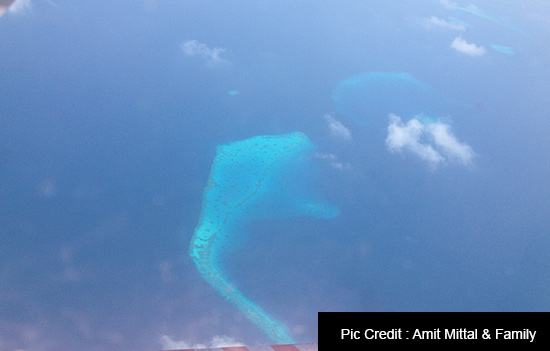 View of Maldives from seaplane.
View of Maldives from seaplane.
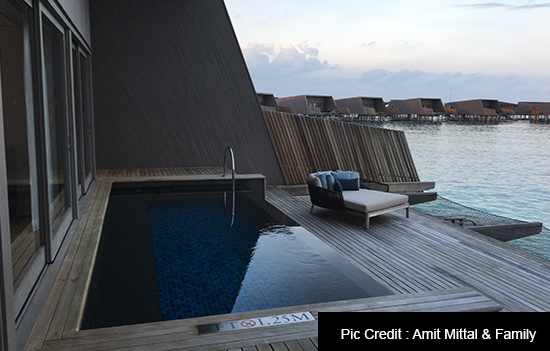 Villa in ocean with private pool.
Villa in ocean with private pool.
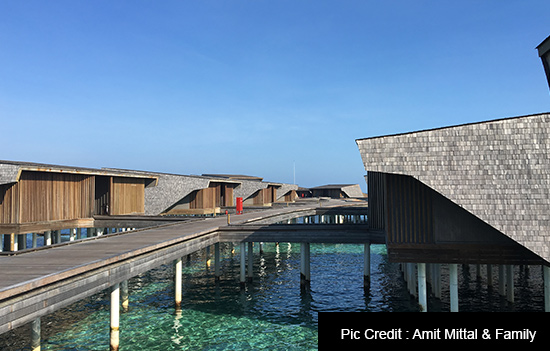 Villas in ocean made on stilts.
Villas in ocean made on stilts.
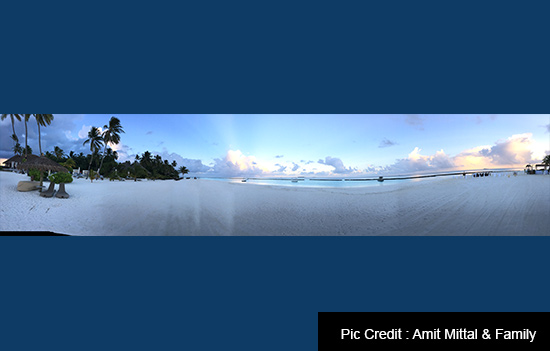 Panoramic view.
Panoramic view.
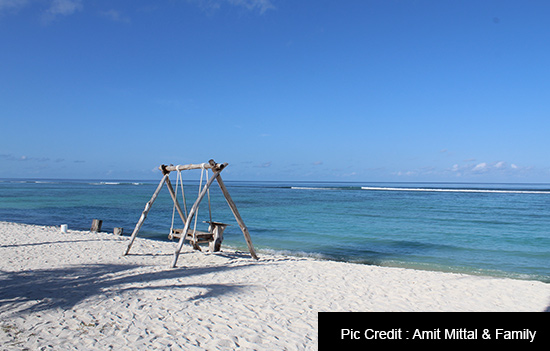 Beach and ocean view.
Beach and ocean view.
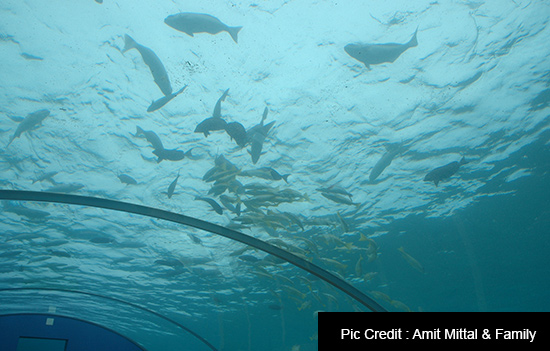 Underwater restautent.
Underwater restautent.
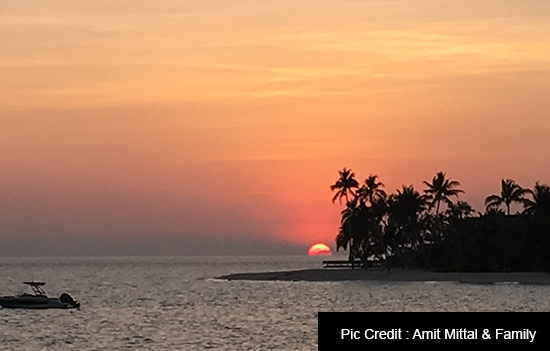 Sun-set Maldives.
Sun-set Maldives.
Also
read
1. Best
Beaches in India
2. Beaches
of Andaman and Nicobar
3. Scuba
diving in Andaman and Nicobar
4. Beaches of
Gokarna
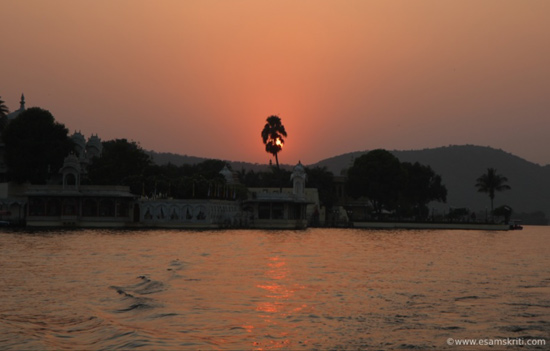 Sun-set at most water locations is awesome. This is at Pichola Lake, Udaipur, India.
Sun-set at most water locations is awesome. This is at Pichola Lake, Udaipur, India.